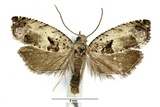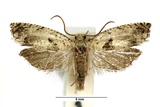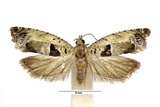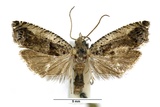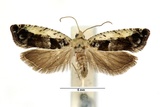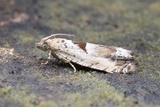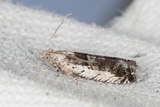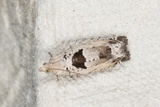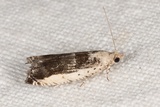Epinotia ramella (Linnaeus, 1758) Species
Last modified: Nov. 24, 2025, 1:28 p.m.
A fairly common species throughout Belgium.
Details
- Classification
- Family: Tortricidae > Subfamily: Olethreutinae > Tribus: Eucosmini > Genus: Epinotia > Species: Epinotia ramella
- Vernacular names
- Gemarmerde oogbladroller (NL), Small Birch Bell, Black-marked Tortrix (EN), Birken-Triebwickler (DE)
- Synonyms
- Epinotia costana (Duponchel, 1836)
- First mention in Belgium
- De Sélys-Longchamps E. 1844. Énumération des insectes Lépidoptères de la Belgique. — Mémoires de la Société royale des Sciences de Liége 2: 1–35. On page 21.
- Status
-
Native
Distribution
Imago
Wingspan 13–16 mm. A variable species with several forms. The nominate form is distinguished from Epinotia bilunana by the grey general appearance of the forewing and particularly the comparatively solid and sharply defined triangular patch on the dorsum at one quarter and black spots at the apex of the forewing.
Another common form is costana in which the forewing is blackish-brown apart from a broad white costal margin which both are sharply defined.
Bionomics
The larva bores in a catkin or in a young shoot on the food plant. The species hibernates in the egg stage. They pupate in a cocoon on the ground.
They fly at dusk and come to light.
Flight periods
The adults can be seen from mid-April, but usually fly from mid-July till mid-October with a peak during August.
Habitat
It inhabits birch woodland, heathland, mixed forests, gardens, and parks.
